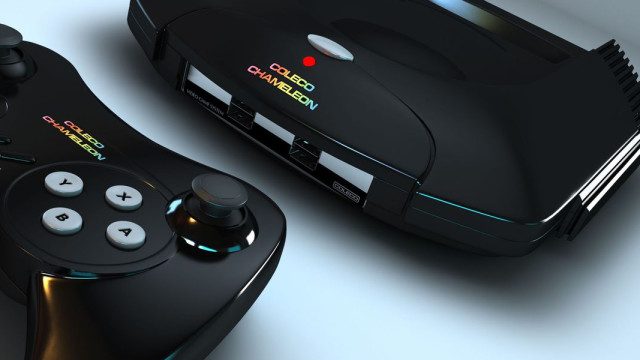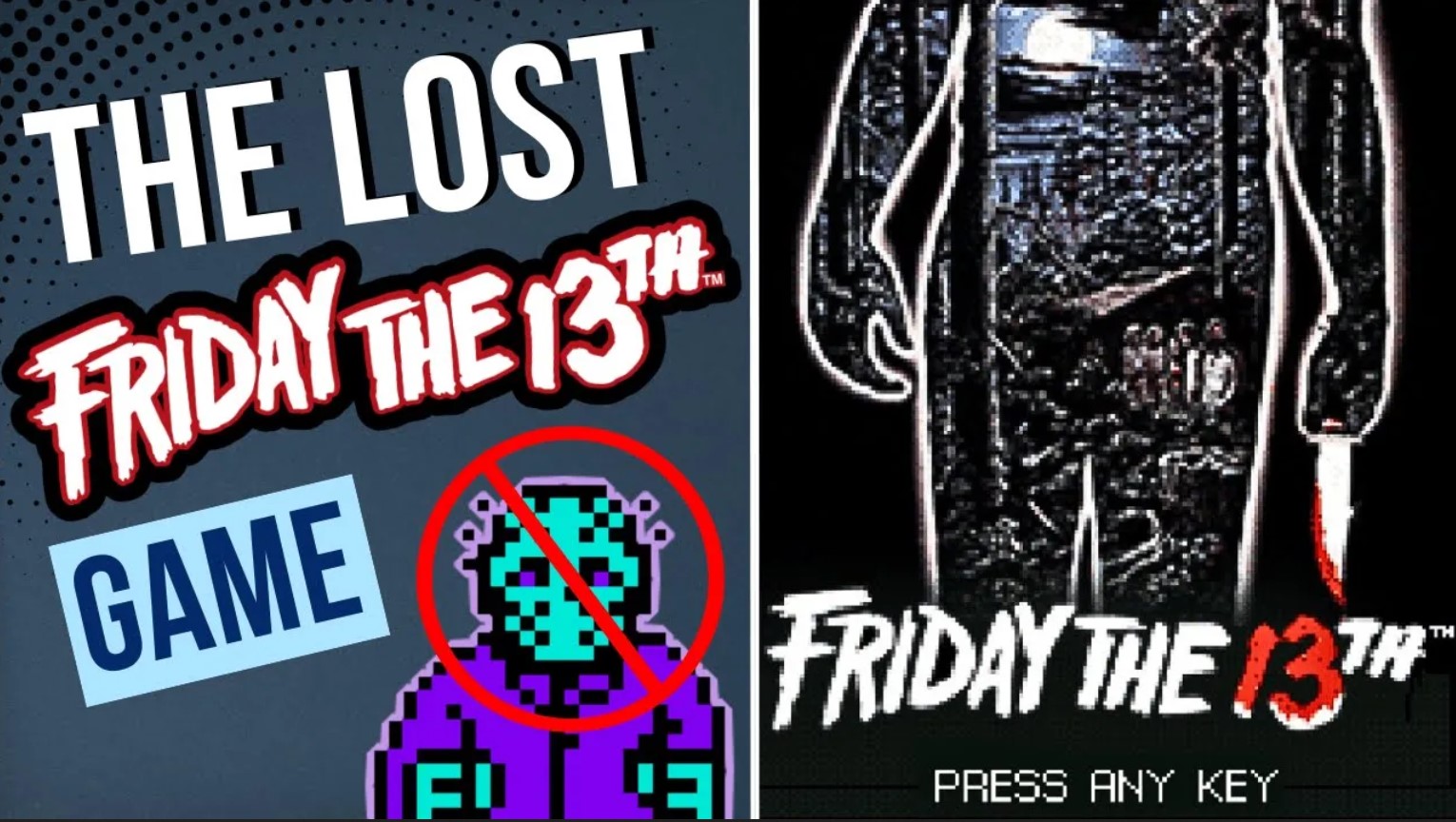They say that the third times a charm, but they also say three strikes and you’re out. The story of the Coleco Chameleon falls into the latter category, but many were calling foul after the first go around. The Coleco Chameleon was intended to be the first home video game console to play cartridge based video games since the Nintendo 64. While there are a number of issues with the idea of reviving cartridge based games –cartridge manufacturing costs/logistics notwithstanding—there is a niche audience in the retro video game community that would chomp at the bit for something like the Coleco Chameleon was offering. If one were to look at the Coleco Chameleon Facebook page–before it was shuttered unexpectedly– you could see a great many gamers excited about the project, especially with its ties to the legendary Coleco brand. This excitement was also stoked by various major online technology and gaming outlets, as well as a number of internet famous YouTube stars within the retro community itself. But the story of the Coleco Chameleon is one of a long running con that has failed on three separate occasions on multiple crowdfunding sites, and has gone through several name changes.
Back in April of 2015 a press release was circulated within the gaming and tech community regarding a new cartridge based video game console. As you could imagine, this idea gained the attention of a great many people at outlets –ourselves included—with what it was promising to do. The then titled RETRO VGS (Video Game System) was the brainchild of RETRO Videogame Magazine’s Mike Kennedy and Ex-Atari/Sega/Nintendo video game developer, Steve Woita. Pulling from the original press release, the team behind the RETRO VGS wanted to:
“…reintroduce gamers to the culture of gaming by providing gamers with a long lasting, solid-state gaming console and tangible high-quality cartridges, boxes and even colorful illustrated instruction manuals. The RETRO VGS will once again foster video gaming culture which includes a spirit of collecting, trading and bragging. A culture where the words, system update, videogame patch, load times, DLC, streaming, digital download, server shutdown, need not be spoken; a culture where social gaming means playing games with your friends and family in your own living room.”

It was an exciting prospect for gamers and indie developers alike. Having a psychical platform to release your games on seemed like a cool idea, and the RETRO VGS team already had already done a lot of the legwork to make this happen, before even heading to a crowdfunding platform. During the early nineties Atari came out with their last home console, the Atari Jaguar. It was a complicated system to program for and one with little third party support. Couple this with Atari and its lack of first-party properties and high price, and you had a recipe for failure. Atari themselves would leave the hardware market a short time later and liquidate as much as they could. As the Jaguar was now dead, Atari sold the original tooling and all associated rights off to a third-party known as Imagin Systems. Imagin would use the molds to create dental X-Ray machines, of which many still exist today.
Then in 2014 Mike Kennedy stepped into the picture by purchasing those same tooling rights from Imagin once the company stopped manufacturing their Jaguar X-Ray machines. This move was the lynch pin in getting the RETRO VGS console to market, as Kennedy claimed that securing the rights to the Atari Jaguar shells would save the team nearly $300,000 dollars. While the Jaguar was in and of itself a failed video game console, the fact that this sort of prep work was already done did lend credence to the validity of the project.
As for the console itself, the specs where right up the alley of retro gaming enthusiasts. The machine would feature two 9-pin connectors –the same used by the Atari and Sega Genesis/Megadrive—as well as dual USB ports to allow modern controllers to be used. The console would also feature HDMI out for use on modern television, but also be able to output in RGB and the much loved S-Video format. As for the technical details the RETRO VGS would run:
- A “Quadrunner” 4-core 1.6 GHz 32-bit ARM Cortex-A9 CPU (16,000 DMIPS) processor plus embedded high-performance graphics processing unit (GPU) with:
- Have 3-D capabilities (shader, tiler, parallel vertex and pixel processing, and more, supporting OpenGL ES 1.1 and 2.0, OpenVG 1.1, etc.)
- Use 2-D (blitter with high-performance stretch and shrink plus one-pass blending, scaling, and rotation, anti-aliased line drawing, etc.)
- Have image enhancement features. (scaling, rotation, mirroring, etc.)
- Come with 1 GiB of RAM (2^30 bytes) 32-bit DDR3-800.
- Would be using a Field-programmable gate array (FPGA) board to run games.
- Use a fast, flexible, durable cartridge interface
- Be convection cooled also there wouldn’t be a noisy fan to wear out
There was indeed a lot to be excited about with regards to the RETRO VGS, and with that initial push the team went to Kickstarter to look for funding. It was during this initial Kickstarter run that things began to look bad for the RETRO VGS and its team. It would be reasonable to assume that they would need a sizable amount of money to make this happen, but remember that they had already saved that $300,000 from the purchasing of the Jaguar molds. So when the Kickstarter went live and the team asked for $2,000,000, people began to ask questions. More troubling was that the console would cost upwards of $400 putting it in line with both the PlayStation 4 and Xbox One. But even with these issues the team pushed on, even enlisting help from a number of YouTube stars in the retro video game community, most prominent of those being Gamester81. Now I should note that Gamester81 seems to be a great guy –I’ve watched his content on and off over the years—and I do believe he was also duped by the RETRO VGS team, but his influence helped to push the nonexistent product. The real issue is that he posted a video calming “1st Gameplay Shown!” when in reality the console was nothing more than sketches on some paper.
The Indiegogo campaign asked for $1,950,000 and made about 4% of its target goal. Once again the people spoke and made it clear that they didn’t want what the RETRO VGS was offering; t least not at the price point Mike wanted to make the console happen. When it was clear the console wouldn’t meet its goal, Mike Kennedy put out the work to not fund the project and that those already backing would be getting refunds. But don’t think that this was the end of the Mike Kennedy and the RETRO VGS, as he promised to return with something bigger and better in the near future; and boy did he ever come back!

GAMESTER81//INSTAGRAM
Fast forward to late 2015, not long after the second failed attempt at funding, and we in the media get an email about a new retro video game console. It seemed that during the down time between projects Mike Kennedy managed to secure some rights and licenses to have the RETRO VGS rebranded as the Coleco Chameleon. Mind you that this isn’t in any way a new system –it’s still the RETRO VGS—but now it has the Coleco branding. The press release was eerily similar to the first one we got a year ago, only now with a new name. Still, there was some small modicum of hope for this new project as it had a much-loved name attached to it thanks to Coleco. Even better was that the console would show a working prototype at The New York Toy Fair in February of 2016.
The team behind the Coleco Chameleon were looking to make magic happen on their third time around, and with a working prototype things looked promising. This is where the media comes into the picture in a very bad way. Sites like Gizmodo, Wired, and Engadget were touting the Coleco Chameleon for what it looked to do, even though with only a simple Google search they would have found all the cracks and failures that this thing was carrying on its back. It showed how little care was taken for basic research, instead choosing to use clickbait headlines and earn views on the backs of video gamers of a certain age. By this time there was a large outcry against the Coleco Chameleon within the retro video game community on sites such as AtariAge as well as on major gaming YouTube channels speaking out against this latest venture. And while the earliest and loudest mouthpiece (gamester81) stayed silent during two failed attempts other spoke out heavily such as Pat The NES Punk via his #CUPodcast.
More troubling was that it was identified by online sleuths that the internals of the Coleco Chameleon was simply the motherboard from an already existing console; the Super Nintendo Jr. This means that the Coleco Chameleon was simply a Super Nintendo Jr –a Nintendo console—stuffed inside the shell of a Jaguar. The rear of the system also shows the same layout for the input ports for said SNES Jr. Things were looking bad, and by this point a number of developers had walked away from the project and made statements about the system itself. As the Coleco Chameleon was in a black Jaguar shell, it was impossible to determine the exact internals, even thanks to those making the SNES Jr. claims.
The Toy Fair came and went and a new Kickstarter was announced, but while Mike Kennedy was on damage control the biggest problem with the Coleco Chameleon came to light in the worst way. In an attempt to prove the console was in fact real, the Coleco Chameleon team posted a new photo of the system in a clear Jaguar shell showing off all the internals. Once again internet sleuths came out and found a major problem with the board shown off in this new picture. It turned out that what was shown wasn’t a FPGA board, but instead was nothing more than a video capture card. People even managed to track down the exact card used to fake the nonexistent internals; the Hicap50B CCTV DVR capture card. As this news began to break across outlets, the upcoming Kickstarter for the Coleco Chameleon was halted before it even began and the team behind the project went dark.

Coleco Holdings –owners of the Coleco name—came out and issued an official statement regarding the now third failed crowdfunding attempt:
“We are thankful to have a large group of passionate engineers and retro game enthusiasts who follow Coleco and other product lines. It has come to our attention that the community has certain concerns over the prototypes involving the Retro VGS model. The team at Retro remains confident that their product is developed to the extent as describe; HOWEVER, in order to confirm or debase these concerns, Coleco has demanded to inspect the prototype units within a seven day time frame. At which time, independent engineers will review their findings and determine if those units are up to our standards. We will report some or all of those findings to the community so as long as they do not interfere with proprietary information. We remain hopeful that the community’s concerns are merely speculations, but if there is merit to the concerns, then we have no choice but to abandon the project rather than release a sub-par product. During this time, we ask that the community allow us time to complete these inspections. Time extensions will only be granted if requested by the independent engineer. Time extensions and results will be posted here.”
By the time of this writing the Coleco Chameleon team is still dark and only have two days remaining to provide a working prototype to the independent engineers that Coleco has hired. It looks as if this final strike may indeed be the last for Mike Kennedy and his dream of a retro video game console.
UPDATE: Today (3/8/2016) Coleco Holdings has cut ties with Mike Kennedy and the re-branded RETRO VGS. The official statement is as follows:
“The Update that you were all anxiously awaiting: Retro VGS has decided that the work that they have created is not sufficient to demonstrate at this time. Consequently, we can no longer proceed with the project and the Chameleon project will be terminated. This separation is amicable. We wish them luck in the future. – We thank the gaming community for their continued support, input, vigilance and trust.”
This statement from Coleco Holdings proves that there was never any prototype for the RETRO VGS/Coleco Chameleon to begin with, and that this entire endeavor was a scam to raise money in hopes of possibly making “something” in the future. Mike Kennedy has single-handily killed any hopes for a cartridge based console and made the entire retro community look bad in the process.




